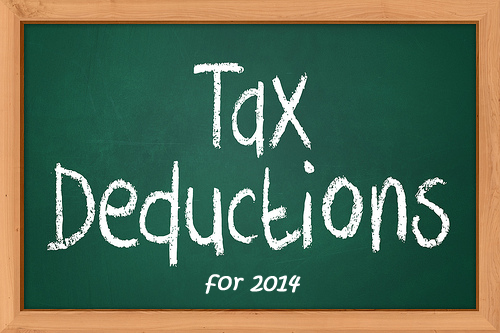Income Tax
Congress Renews Most Expired Tax Breaks
At long last, Congress granted a reprieve for most of the expired tax provisions that had remained in limbo this year, but the late-breaking tax relief is only temporary.
Dec. 17, 2014

At long last, Congress granted a reprieve for most of the expired tax provisions that had remained in limbo this year, but the late-breaking tax relief is only temporary.
The new legislation – the Tax Increase Prevention Act of 2014 – restores these tax breaks retroactive to January 1, 2014. However the provisions expire again on December 31, 2014, so Congress will likely take up these measures again after the holidays. The president is expected to sign the approved bill into law.
In addition to the laundry list of tax extenders, Congress tacked on a new law creating tax-free savings accounts for certain disabled individuals. This legislation applies to accounts set up after December 31, 2014 (see this article).
The tax extenders cover a wide range of tax breaks both large and small for individuals and businesses. Here are ten of the most popular items for your clients.
- State and local tax deductions: In lieu of deducting state and local income taxes, a taxpayer may elect to deduct states sales taxes. Deductions are based on actual receipts or a state-by-state table (plus sales tax paid for certain big-ticket items).
- Section 179 deductions: A business can currently deduct, or “expense,” up to $500,000 of qualified assets placed in service in 2014, subject to a phaseout threshold of $2 million. Prior to the latest extension, the maximum allowance was just $25,000 with a $200,000 phaseout threshold.
- Bonus depreciation: A separate provision allows a business to claim 50% “bonus depreciation” for qualified assets placed in service in 2014. Note that bonus depreciation may be combined with the Section 179 deduction in some cases.
- Charitable IRA rollover: If you’re over age 70½, you can roll over up to $100,000 of IRA proceeds to a charity without paying tax on the distribution. This technique is often used to satisfy the rules for required minimum distributions (RMDs).
- Research credits: This popular tax credit, which has been extended numerous times in the past, provides a tax credit equal to 20% of qualified expenses exceeding a base amount. Alternatively, a business can elect to use a simplified 14% credit.
- Tuition-and-fees deduction: Taxpayers may deduct tuition and fees paid to a college in lieu of claiming one of the higher education tax credits. However, the maximum deduction of $4,000 is phased out based on modified adjusted gross income (MAGI).
- Hiring credits: The Work Opportunity Tax Credit (WOTC) is available to employers hiring workers from one of several disadvantaged groups. Generally, the maximum credit is $2,400 per worker, although it can be high as $9,600 for certain veterans.
- Mortgage loan forgiveness: This provision authorizes a tax exclusion for mortgage loan forgiveness on debts up to $2 million. The exclusion is available only on debt forgiveness for a principal residence.
- Home energy credits: The residential energy credit has existed in various forms for years. For 2014, a maximum $500 credit may be claimed for 10% of qualified energy-saving expenditures like new heating and air conditioning systems.
- Teacher classroom expenses: Teachers and certain other educators are able to deduct up to $250 of their out-of-pocket classroom expenses. This deduction is claimed above-the-line.
Some of the other tax extenders are specific to industries such as tax breaks for restaurants, horse breeders and NASCAR. Only a handful of expired provisions, such as a credit for plug-in electric vehicles and a health coverage credit for displaced workers, were not extended.
